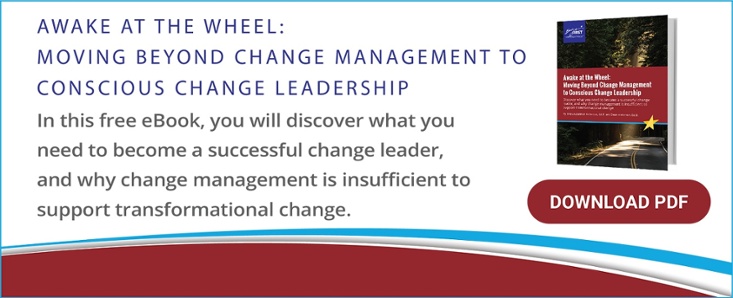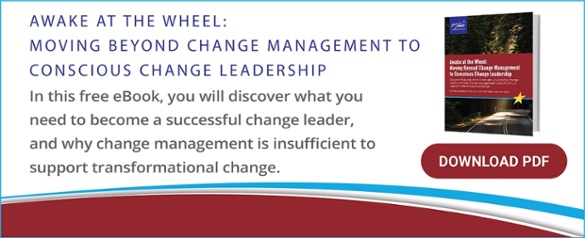“Take another trip around the hamster wheel!” This quote is how my client fondly referred to our project and the Change Leader’s Roadmap™ (CLR) methodology that is guiding my work, after we had created a second phase implementation plan for his company.
The project is in the news division of one of the country’s most prominent media companies. After a period of optimizing operations and trimming the organization, they decided to re-vitalize their “why we exist” statement. This materialized into a new guiding light. My client appointed an internal project manager and hired me to help him with two objectives – orchestrate the implementation of their revitalized direction and concurrently train the project manager in change leadership. The CLR is the backbone of this program.
I find my best projects are those focusing on change leadership competence development combined with a tangible deliverable, as is the case in this project. When I train others in using the CLR, I learn something myself – either a new discovery or a new angle – when viewing the CLR through the eyes of my client, as well as the enrichment that comes with my clients’ own experiences.
For this project, we set out to alternate between delivering and training. We planned the first phase using the CLR as our guide. Creating the Case for Change (CFC) proved to be a good starting point. Here we used the CFC framework and populated it first with the prior inputs the management team had addressed so we could identify what remained to be determined. We communicated the current status of the Case for Change to the organization and then created a phase 1 plan to fill these gaps. We then used the Change Strategy framework to create the phase 1 plan.
The planning phase was a lot of fun! We covered a wall with brown paper, marked off 3-4 months, and started filling it up with post-its noting actions and people to engage. First, we put in the known milestones and the deliverables the management team had already decided. Based on early success, they decided to start up a number of pilot projects. We assessed the needs of the stakeholders using the Target Analysis framework and created the engagement and communication plan based on this. All these items were then added to the brown paper map of actions.
Once the phase 1 plan was created, we took it to the steering committee and management team to adjust and sign off. Pilot projects were launched and we equipped the leaders of these with a basic 4-phase model: 1) Analysis/Planning, 2) Design, 3) Implementation, 4) Scaling/roll out. We course corrected the plan as we went and, as we neared the end of the three months, we held a new planning session, redid the target analysis, and evaluated what was needed the next three months.
This was trip no. 2 in the hamster wheel! The first plan was perhaps overambitious, and some unforeseen events required some reprioritizations, but isn’t that the reality we meet almost every project? So instead of beating ourselves up about what we didn’t get right, we turned our focus on where we are now, and what the best next step is. Motivating 500 people to change their mindsets and daily habits takes time and a conscious effort. With the CLR in our back pocket, we always find guidance and support in figuring out what the best next step is. I imagine we take the next turn in another 3 months, as we nudge the organization in the new direction.

Lisa Richardson, Principal at Valcon, 4Sight Graduate


